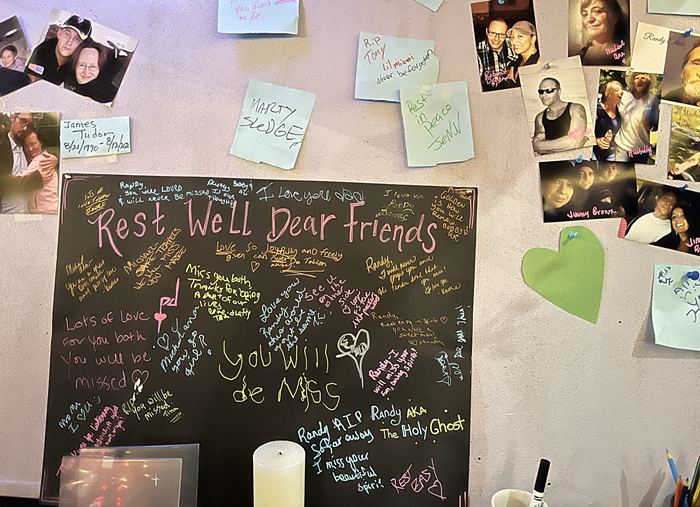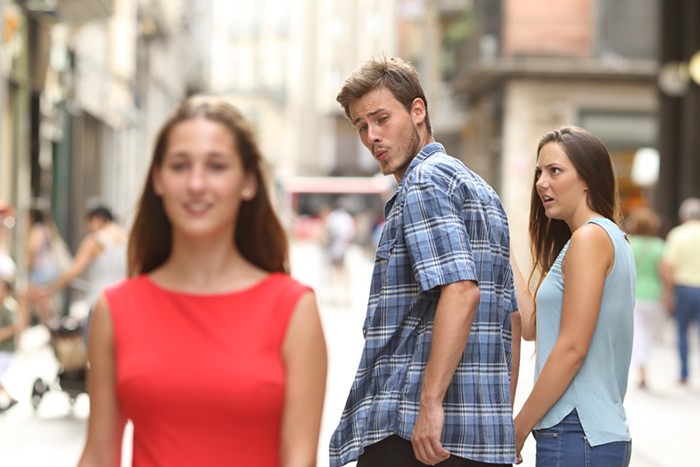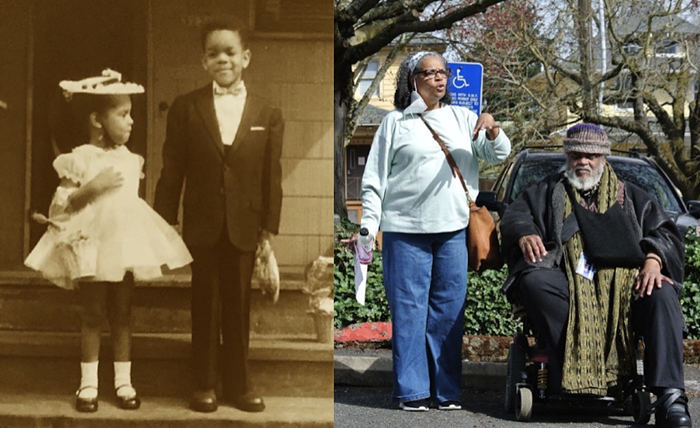Movies allow us to see all points of intimacy: people in their homes, people at work, people fucking. Through the artifice of the camera, movies suspend our disbelief and allow us to externalize our desires into an otherwise unrealized moment of familiarity, though we are not actually present. When approaching Natascha Snellman's Face Façade at Fourteen30 Contemporary, the experience is eerily similar. Minimalist sculptures, replete with geometric symmetry, ground the pieces in that which we have seen before. Yet Snellman only playacts as a minimalist, appropriating minimalism's conventions in an ironic juxtaposition against found driftwood, duct tape, and old Hollywood imagery. Feminine forms and figures rest upon platforms that evoke the works of artists Carl Andre and Sol LeWitt, situating minimalism at the service of an ironic fantasy, a dark joke that renders our voyeuristic intentions into a cagey sidelong glance in the face of blank objects.
Snellman's choice of materials (tinted glass, driftwood, aluminum, glossy black duct tape, and black rope) plays off our precarious relationship to objects. Both natural and manufactured materials become charged in our gaze, but where in other Latinate languages these materials explicitly have genders, in English they do not. Works like "Personage Plays Person" flirt with this gender play, as the black-and-white face of an old Hollywood starlet masks a driftwood stand, a tiny shield for its wooden and eroded posture. The piece is as much a formal study of materials as it is a cruel joke—the uncanny pairing entertains our desires, but the single-sided image is but a silhouette of our attraction. In "Baby Take a Bow (suspended)," the mask is a tinted glass pane concealing a taped and knotted net beneath. Both title and materials mock the slumped posture of the piece: Taking a bow would pull the piece from its moorings, crushing both net and glass. The piece echoes Duchamp's "The Large Glass," but Snellman's cynical juxtaposition of materials implicates the viewer even further. "Baby" confronts us like a woman in sunglasses, and, unable to perceive her gaze, we are left with our own off-color reflection. Throughout Snellman's world, we must approach objects at our own peril, as each new encounter deserts us in our hollow libidinous trappings.













